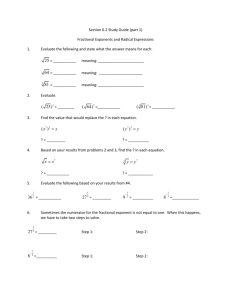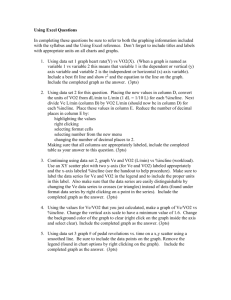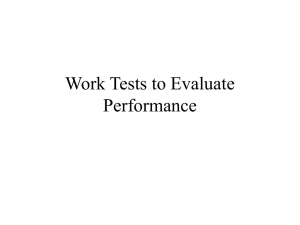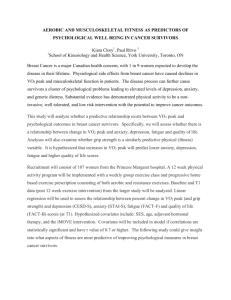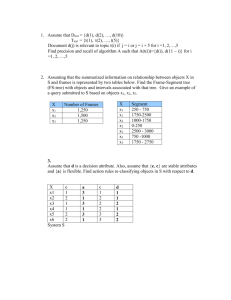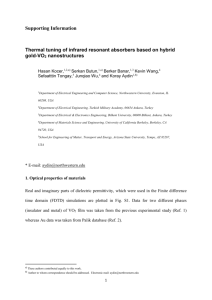Supporting Information
advertisement
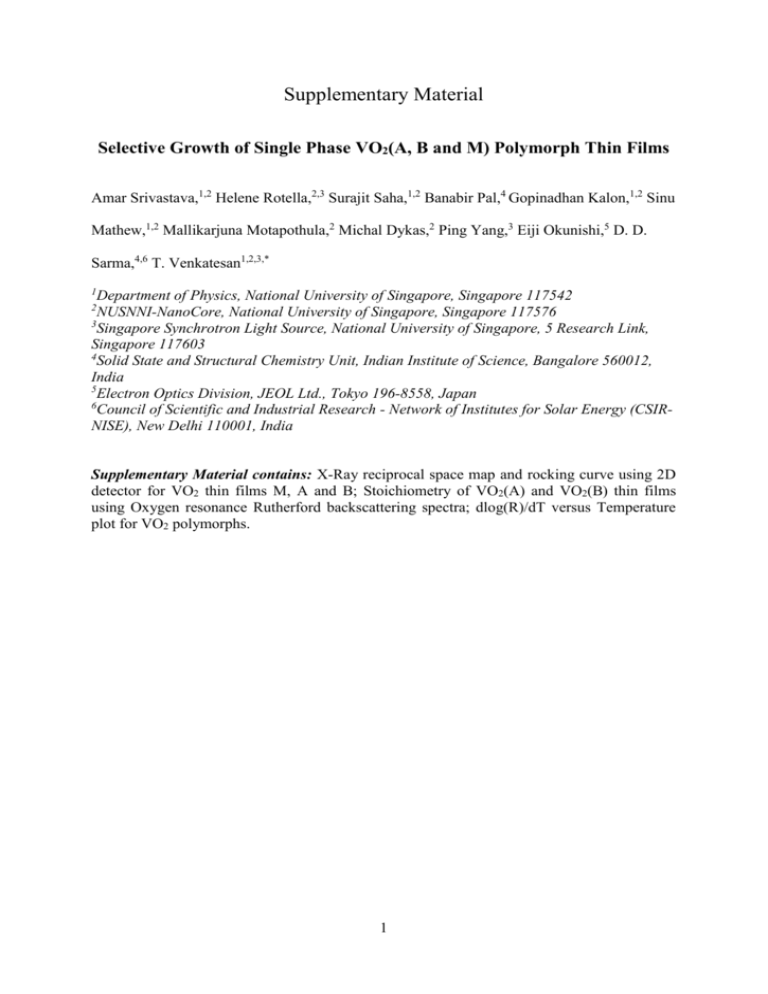
Supplementary Material Selective Growth of Single Phase VO2(A, B and M) Polymorph Thin Films Amar Srivastava,1,2 Helene Rotella,2,3 Surajit Saha,1,2 Banabir Pal,4 Gopinadhan Kalon,1,2 Sinu Mathew,1,2 Mallikarjuna Motapothula,2 Michal Dykas,2 Ping Yang,3 Eiji Okunishi,5 D. D. Sarma,4,6 T. Venkatesan1,2,3,* 1 Department of Physics, National University of Singapore, Singapore 117542 NUSNNI-NanoCore, National University of Singapore, Singapore 117576 3 Singapore Synchrotron Light Source, National University of Singapore, 5 Research Link, Singapore 117603 4 Solid State and Structural Chemistry Unit, Indian Institute of Science, Bangalore 560012, India 5 Electron Optics Division, JEOL Ltd., Tokyo 196-8558, Japan 6 Council of Scientific and Industrial Research - Network of Institutes for Solar Energy (CSIRNISE), New Delhi 110001, India 2 Supplementary Material contains: X-Ray reciprocal space map and rocking curve using 2D detector for VO2 thin films M, A and B; Stoichiometry of VO2(A) and VO2(B) thin films using Oxygen resonance Rutherford backscattering spectra; dlog(R)/dT versus Temperature plot for VO2 polymorphs. 1 X-Ray analysis using 2D detector for VO2 thin films M, A and B Fig. S1 shows the 2D X-Ray reciprocal space map of the (a) VO2(M) (b) VO2(A) and (c) VO2(B) films using 2D detector. Below of each 2D RSM map is their respective integrated θ2θ pattern along the Chi direction. A combined integrated Chi () pattern around the (011) reflection of VO2(M), (220) reflection of VO2(A) and (002) reflection of VO2(B) is shown of the left side of Fig. S1. In the integrated θ-2θ pattern for VO2(M) we observe two peaks at 27.89° and 57.22° (Fig. S1 (a)). According to the VO2(M) bulk crystallographic structure, these peaks are related to the (011) and (022) crystallographic planes. Similarly we observe two peaks at 29.62 and 44.98 for VO2 (A), peaks at 29.05 and 44.05 for VO2(B) as shown in Fig. S 1(b) and 1(c) respectively. According to the bulk crystallographic structure, these peaks are related to the (220) and (330) of VO2(A), (002) and (003) of VO2(B) crystallographic planes respectively. FIG. S1. X-Ray reciprocal space map using 2D detector for thin films. X-Ray reciprocal space map of the, (a) VO2(M), (b) VO2(A) and (c) VO2(B) film using 2D detector and below is their respective integrated θ-2θ pattern along the Chi direction. Left side of the figure is Integrated Chi () pattern around the VO2(M) (011), VO2(A) (220), VO2(B) (002) reflection. 2 By focusing on the (011) reflection (Fig. S1 (a)), the orientation of the (011) VO2(M) plane is different from the (100) SrTiO3 plane orientation by an angle of around ~7° in χ as shown in integrated Chi () pattern while the appearance of the peak (220) of VO2(A) and (002) of VO2(B) at = - 90 confirms that the (220) planes of VO2(A) and (002) planes of VO2(B) are parallel to the (100) planes of SrTiO3 single crystal substrate. The observation of the two reflections along the χ angle in VO2(M) can be either by the presence of two different crystallographic domains in the film or two equivalent reflections. FIG. S2. The rocking curve for the M, A, B thin film phases of VO2 deposited on (100) orientated SrTiO3. The d spacing, the rocking curve of the films, the grain size extracted from the FWHM of 2θ peaks are shown in Table S1). Table S1. Comparison of the rocking curves and the calculated d spacing’s of M, A and B phase of VO2 deposited on SrTiO3. Polymorphs d spacing (Å) FWHM (2θ) (°) Grain siz(Å) FWHM (ω) (°) VO2(M) on STO d011 = 3.204±0.003 0.256 307±2 1.10 VO2(A) on STO d220 = 3.018±0.002 0.147 544±3 0.12 VO2(B) on STO d002 = 3.082±0.002 0.150 557±3 0.87 3 Stoichiometry of VO2(A) and VO2(B) thin films FIG. S3. Oxygen resonance Rutherford backscattering spectra using 3.045 MeV alpha ions and respective SIMNRA fit of VO2(B) film grown on single crystal SrTiO3 substrate. The inset shows the comparison of the Oxygen peak for the VO2(A) and VO2(B) films. From the simulation and fitting we confirmed the composition for the two films VO2(A) and VO2(B) deposited on SrTiO3 substrate is VO20.02. Metal insulator transition temperature of VO2 polymorphs To extract the exact insulator to metal transition temperature in the three phases we have plotted the derivative of resistance with respect to temperature versus Temperature (Fig. S4). The dip in the plot represents the MIT temperature. From the figure we calculate that VO2(M) shows MIT at 340 K during the heating which is in very good agreement with the bulk and reported thin film data. While cooling the MIT has reduce to 330 K. Our VO2(M) sample shows large hysteresis approximately ~10 K. The large hysteresis can be due to inhomogenity, defects and dislocations arise because of large lattice mismatch between the substrate and films. The VO2(A) thin films do not show metal to insulator transition, the VO2(B) films 4 shows a kink at 264 K and a clear transition at 205 K during the heating cycle which shift to 252 K and 194 K respectively during the cooling cycle. FIG. S4. dlog(R)/dT versus Temperature plot for cooling and heating cycle. 5

